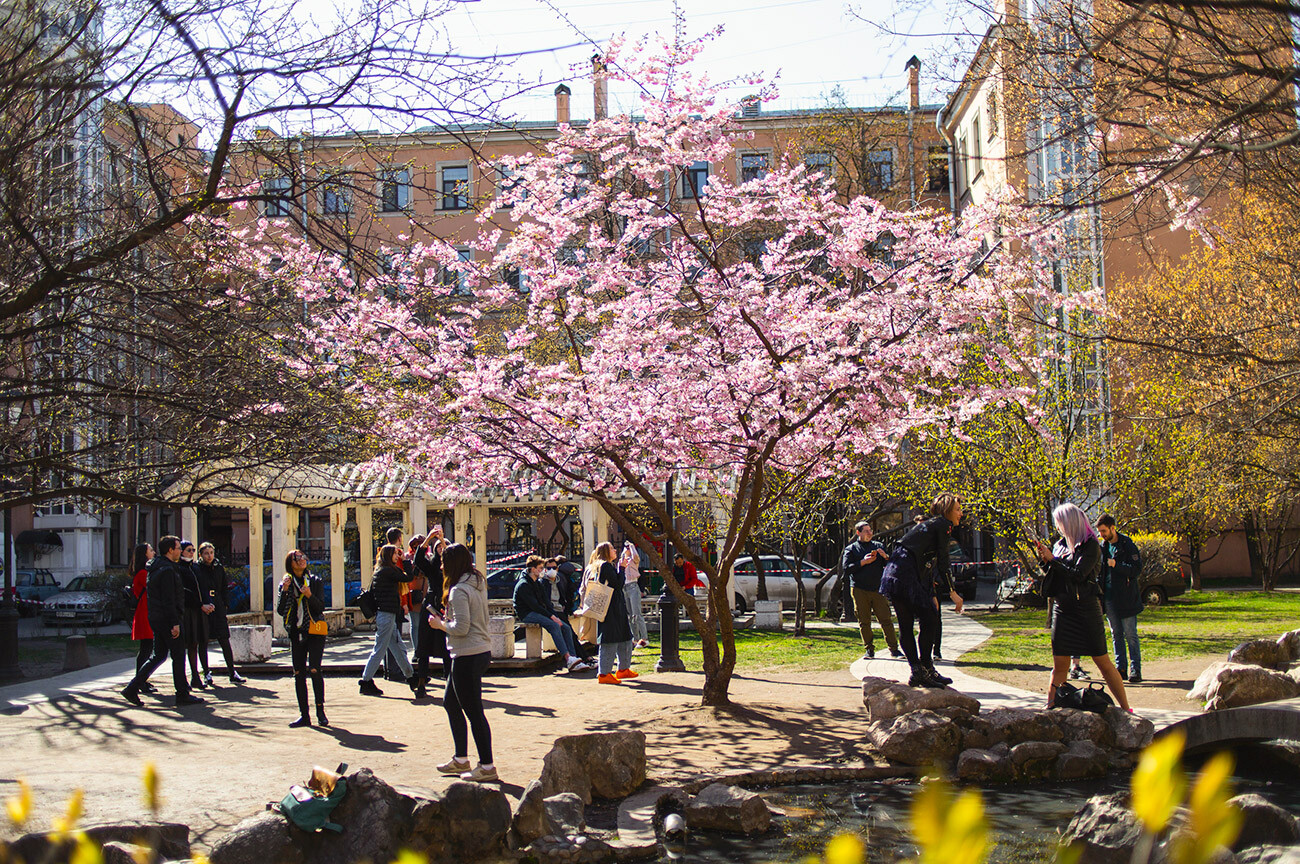Oriental St. Petersburg: Shades of China, Egypt, Maghreb and Tibet (PHOTOS)

For the inhabitants of the most European Russian city, the East has always been shrouded in mystery and romanticism: after all, not many had an opportunity to travel there. The visions of distant foreign cultures haunted the imaginations of those keen on exoticism; people with heavy enough purses externalized their dreams into the architectural appearance of buildings and into exquisite interiors. In time, by virtue of national communities and through the development of twinning relations, other “isles” of the Far and Middle East began to emerge in the city.
Chinese Palace in Oranienbaum

Oranienbaum is one of the country residences of the Romanov Dynasty. In the years 1762 to 1768, Italian architect Antonio Rinaldi built the Chinese Palace there by the order of Catherine the Great. The exterior of this building was designed in the style of Western European Rococo; however, some of the interiors were designed in Chinese style, fashionable at the time.

Oriental motifs are easily recognized in the decoration of the Glass-Beaded Salon: its walls are adorned with 12 panels, made with glass beads and silk in Chinoiserie style.

At the same time, the Small and Big Chinese parlors of the palace look as though they were moved here entirely from that far-away land. Wooden panels depict scenes of life in China, while dragons guard the parlors’ windows.
Grand Choral Synagogue

In the middle of the 1850s, Emperor Alexander II relaxed the provision of law on prohibiting Jews from living in the capital. Their community began to grow quickly and, with it, the amount of prayer houses. In 1869, the tsar granted the Jews of St. Petersburg the right to build a synagogue instead of their prayer houses. For 10 more years, the community was gathering funds and looking for a place for its construction. Afterwards, the community started discussing the building itself, which was built in 10 years, from 1883 to 1893.

It owes its look to Vasily Stasov, an architectural critic, who was inspired by the New Synagogue in Berlin, built in Arabic-Moorish style by Jewish architect Edward Knoblauch.

It is believed that Jewish communities in Europe built their synagogues in Moorish style in memory of the golden age of Jewish culture in Islamic Spain.
Datsan Gunzechoinei

The world’s northernmost Buddhist temple appeared in St. Petersburg thanks to the 13th Dalai Lama’s Russian representative, a Buryat lama named Agvan Dorzhiev. In 1908, after the establishment of the diplomatic relations between Russia and Tibet, he persuaded the imperial authorities to issue a permit to erect a Buddhist religious building in the capital.

A Tibetan temple or dugan was used as a model for the new building; however, its look was reinterpreted by the architects under the influence of National Romantic style, fashionable at the time. The funds for the construction were donated by Dorzhiev, the 13th Dalai Lama, and the Buddhists of Buryatia and Kalmykia.

The temple was consecrated in 1915. During the Russian Civil War (1918-1923), the temple suffered damage from pogroms; in the 1920s-1930s, it was handed to the Tibetan-Mongol Mission in the USSR, but the Mission was closed in 1938, the lamas were arrested and the building fell into the hands of the government. The religious significance of the temple was restored only at the beginning of the 1990s.
Quay with Sphinxes

There are almost 30 sphinx statues in St. Petersburg. The oldest and the most famous of them reside at the Universitetskaya Embankment, in front of the Imperial Academy of Arts. Those are original Egyptian sculptures, made from pink granite in the 14th century BC to decorate the mortuary temple of Amenhotep III. They were brought to the Russian capital in 1832 and installed in 1834.

An urban legend says that if you look into the eyes of the sphinxes for too long, you can go mad. As had been said among the common folk, all the drowned from the Neva River’s upstream were washed up on this embankment, which only fueled the bad reputation of the sphinxes.
Among other sphinx statues in St. Petersburg, two gloomy sculptures of Mihail Chemiakin are especially prominent, as a part of the Memorial to the Victims of Political Repressions in the USSR.

They stand in front of the infamous Kresty Prison, where political prisoners were detained. From the side of the residential houses on the embankment, the sphinxes show the sensual faces of maidens with their breasts naked, while from the prison’s side, they show bare skulls. This symbolizes the tragedy of a nation divided; some lived in ignorance, while others perished under dictatorship.
Chinese Garden of Friendship

This garden was opened on Liteyny Avenue in 2003; it was a present for the 300th anniversary of St. Petersburg from Shanghai, its twin city. The public garden is a miniature copy of the Shanghai Yu Garden. The centerpieces of the garden are the Pagoda of Friendship and the Wall of Nine Dragons that “ward off evil spirits”.

According to Chinese tradition, if you stand under this wall and repeat the word “success” nine times, your business will pick up.

The garden is also decorated by sculptures, as well as rocks from Lake Taihu in Southern China that represent mountain ranges. In spring, when the sakura blossoms, the garden turns into one large photography hotspot for the inhabitants and guests of St. Petersburg.

